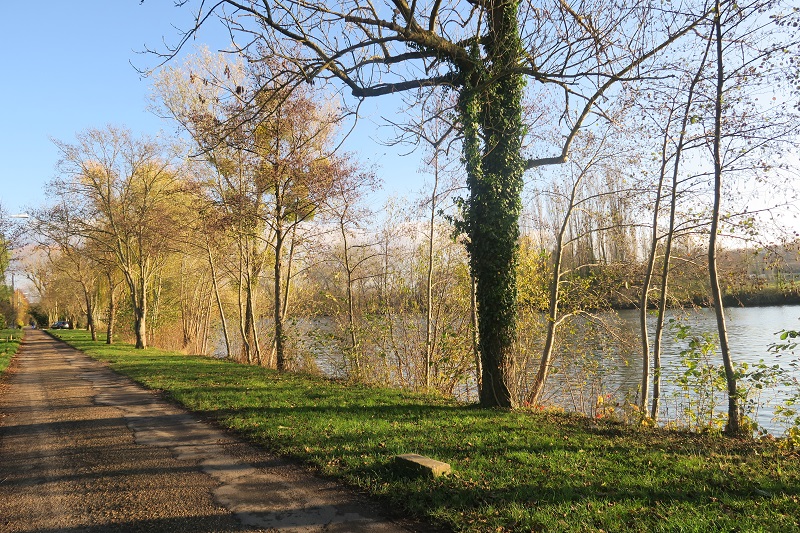Informations directionnelles
Longer l’Oise, puis prendre la 1ère route sur la gauche. Traverser les voies de chemin de fer, puis la rue Pasteur. Continuer tout droit jusqu’à la fontaine.
Prochain point : lat="49.13741" lon="2.23999"
Champagne-sur-Oise
More about the hillside village
Deep history…
In 1957, excavations at the Catillon hillock turned up remains from the Neolithic period (6,000 to 2,200 BC). More discoveries were made in 2011: a 5th century settlement at rue du Chemin Vert, and two Neolithic menhirs.
“Campagna Villa” – said to be from the Latin campania for fertile plain – was the name given to the village during the Gallo-Roman period, which it kept until the Merovingian period. The first mention of the name Champagne appears in 635 when Dagobert I donated land in the Chambliois, including Champagne, to the abbey of Saint-Denis.
The railway…
The railway brought change, not only to the structure of the village, but also to its social and economic life. The line was inaugurated in 1846 and links Pierrelaye in Val d’Oise to Creil in Oise. Champagne-sur-Oise station was opened in 1879 and led to significant population growth.
…ushered in holidays
Rail infrastructure also spelt holidays in the country. And residents of the greater Paris region embraced the idea with enthusiasm, with “country houses” and “hunting lodges” in the 16th century and “second homes” in the 20th. At first, holidays were the privilege of the cultural elite of Paris and Versailles, who escaped the city to breathe the country air, eat fresh produce and generally enjoy themselves. The Revolution, the industrial revolution and the development of transport – Royal roads, railways and then cars – were all pivotal in expanding the concept of holidaying to other strata of society and other regions.
Villas like the Brictonne, Espérance, Henriette, and Antoinette Villas were built in a range of different architectural styles.




